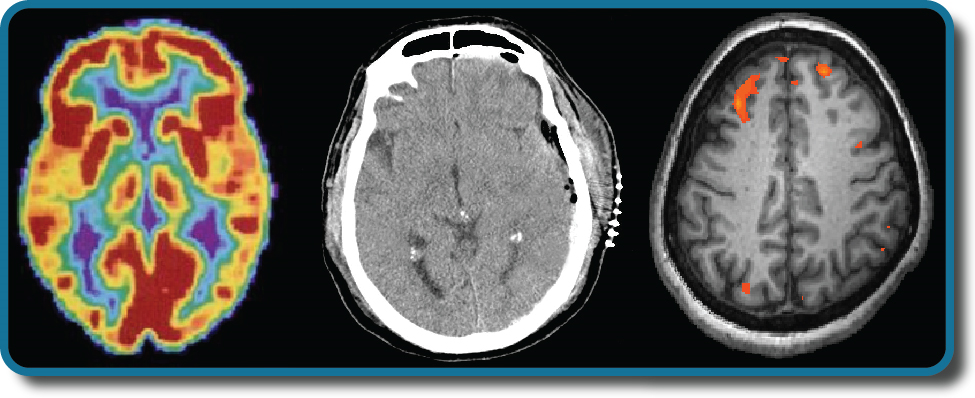3.1 : Prélude à la biopsychologie
- Page ID
- 190436
Objectifs d'apprentissage
- Expliquer les mécanismes biologiques qui sous-tendent le comportement

Avez-vous déjà démonté un appareil pour découvrir comment il fonctionne ? Nous sommes nombreux à l'avoir fait, que ce soit pour tenter une réparation ou simplement pour satisfaire notre curiosité. Le fonctionnement interne d'un appareil est souvent distinct de son interface utilisateur externe. Par exemple, nous ne pensons pas aux micropuces et aux circuits lorsque nous montons le volume sur un téléphone portable ; nous pensons plutôt à obtenir le volume juste. De même, le fonctionnement interne du corps humain est souvent distinct de l'expression externe de ce fonctionnement. C'est le travail des psychologues de trouver le lien entre ces éléments, par exemple, de comprendre comment les déclenchements de millions de neurones deviennent une pensée.
Ce chapitre cherche à expliquer les mécanismes biologiques qui sous-tendent le comportement. Ces fondements physiologiques et anatomiques sont à la base de nombreux domaines de la psychologie. Dans ce chapitre, vous apprendrez comment la génétique influence les traits physiologiques et psychologiques. Vous vous familiariserez avec la structure et le fonctionnement du système nerveux. Enfin, vous apprendrez comment le système nerveux interagit avec le système endocrinien.
References
Arnst, C. (2003, November). Commentary: Getting rational about health-care rationing. Bloomberg Businessweek Magazine. Retrieved from http://www.businessweek.com/stories/...care-rationing
Berridge, K. C., & Robinson, T. E. (1998). What is the role of dopamine in reward: Hedonic impact, reward learning, or incentive salience? Brain Research Reviews, 28, 309–369.
Chandola, T., Brunner, E., & Marmot, M. (2006). Chronic stress at work and the metabolic syndrome: A prospective study. BMJ, 332, 521–524.
Comings, D. E., Gonzales, N., Saucier, G., Johnson, J. P., & MacMurray, J. P. (2000). The DRD4 gene and the spiritual transcendence scale of the character temperament index. Psychiatric Genetics, 10, 185–189.
Confer, J. C., Easton, J. A., Fleischman, D. S., Goetz, C. D., Lewis, D. M. G, Perilloux, C., & Buss, D. M. (2010). Evolutionary psychology: Controversies, questions, prospects, and limitations. American Psychologist, 65, 110–126.
Gaines, C. (2013, August). An A-Rod suspension would save the Yankees as much as $37.5 million in 2014 alone. Business Insider. Retrieved from www.businessinsider.com/an-a-...in-2014-2013-8
Gardner, E. L. (2011). Addiction and brain reward and antireward pathways. Advances in Psychosomatic Medicine, 30, 22–60.
George, O., Le Moal, M., & Koob, G. F. (2012). Allostasis and addiction: Role of the dopamine and corticotropin-releasing factor systems. Physiology & Behavior, 106, 58–64.
Glaser, R., & Kiecolt-Glaser, J. K. (2005). Stress-induced immune dysfunction: Implications for health. Nature Reviews Immunology, 5, 243–251.
Gong, L., Parikh, S., Rosenthal, P. J., & Greenhouse, B. (2013). Biochemical and immunological mechanisms by which sickle cell trait protects against malaria. Malaria Journal. Advance online publication. doi:10.1186/1475-2875-12-317
Hardt, O., Einarsson, E. Ö., & Nader, K. (2010). A bridge over troubled water: Reconsolidation as a link between cognitive and neuroscientific memory research traditions. Annual Review of Psychology, 61, 141–167.
Macmillan, M. (1999). The Phineas Gage Information Page. Retrieved from http://www.uakron.edu/gage
March, J. S., Silva, S., Petrycki, S., Curry, J., Wells, K., Fairbank, J., … Severe, J. (2007). The treatment for adolescents with depression study (TADS): Long-term effectiveness and safety outcomes. Arch Gen Psychiatry, 64, 1132–1143.
Mustanski, B. S., DuPree, M. G., Nievergelt, C. M., Bocklandt, S., Schork, N. J., & Hamer, D. H. (2005). A genome wide scan of male sexual orientation. Human Genetics, 116, 272–278.
National Institute on Drug Abuse. (2001, July). Anabolic steroid abuse: What are the health consequences of steroid abuse? National Institutes of Health. Retrieved from www.drugabuse.gov/publication...-steroid-abuse
Squire, L. R. (2009). The legacy of patient H. M. for neuroscience. Neuron, 61, 6–9.
Tienari, P., Wynne, L. C., Sorri, A., et al. (2004). Genotype–environment interaction in schizophrenia spectrum disorder: long-term follow-up study of Finnish adoptees. British Journal of Psychiatry, 184, 216–222.
University of Utah Genetic Science Learning Center. (n.d.). What are genetic disorders? Retrieved from learn.genetics.utah.edu/conte...ers/whataregd/


